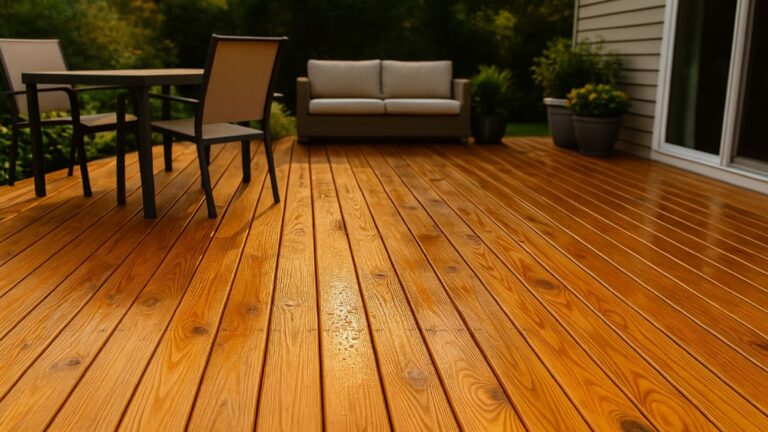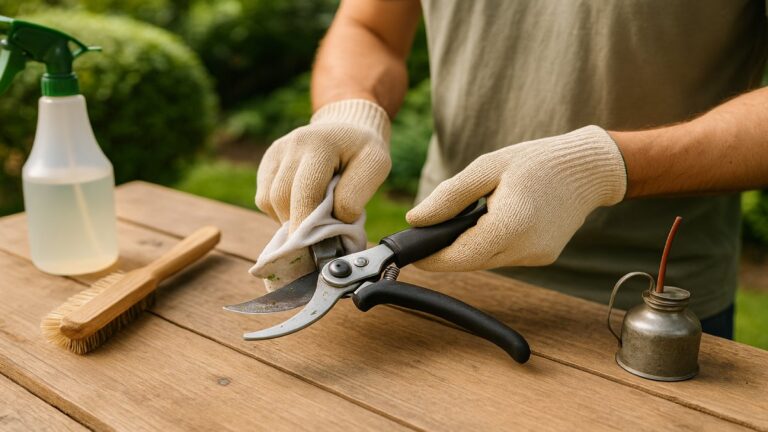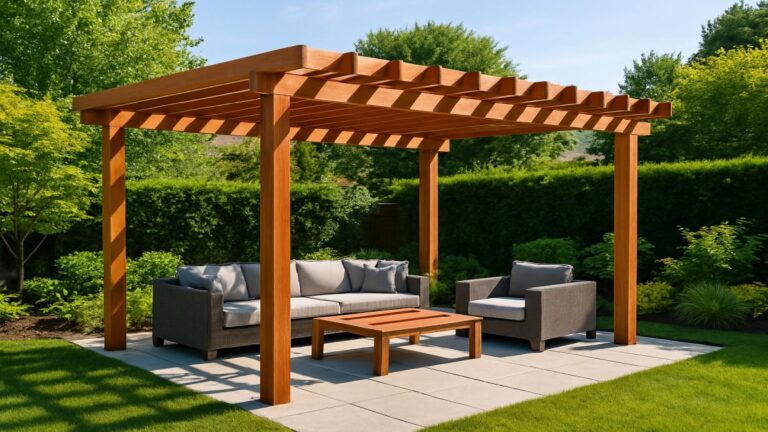Simple Outdoor Projects to Upgrade Your Backyard Quickly
Ready to give your backyard a glow-up without hiring a crew? This friendly guide rounds up simple outdoor projects that fit real weekends, real budgets, and real homes across the USA. You’ll learn how to add comfort, privacy, and curb appeal with easy steps that don’t eat your paycheck or your free time.
We’ll start with fast wins like lighting and raised planters, then move into privacy screens, small fire features, water-smart ideas, tidy paths, and budget planning. Every section includes practical tips, clear steps, and safety notes so you can work confidently and finish proud.
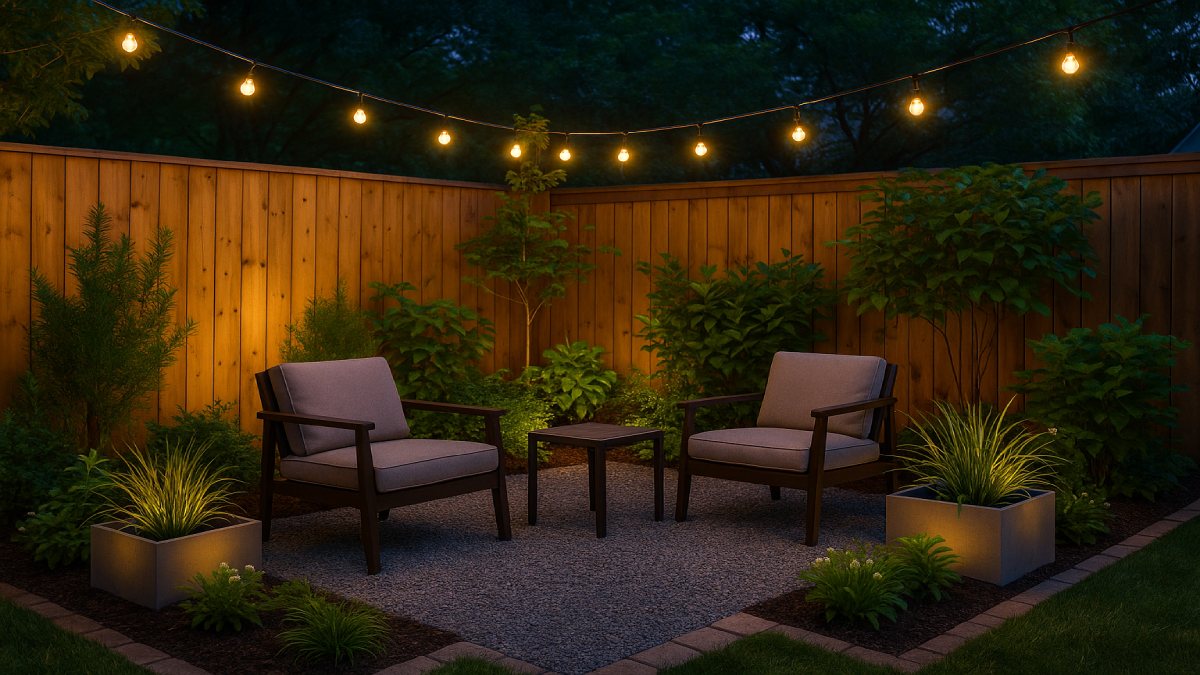
Why Small Backyard Upgrades Deliver Big Results
Outdoor projects do more than look pretty. They shape how you use your home every day. A few well-placed lights extend evenings. A pair of raised planters keeps herbs close to the kitchen. A slim privacy panel makes a chat with friends feel relaxed. These “micro-upgrades” combine into an outdoor room that works like your living room—only breezier.
Goals That Keep Your Weekend Work Focused
- Comfort: Cooler seats at noon, warmer nights after sunset, less glare during dinner.
- Clarity: Clean edges, defined walkways, and obvious zones for lounging and dining.
- Care: Materials that shrug off weather and cut down on maintenance chores.
- Cost control: Weekend projects with clear starts and finishes so momentum never stalls.
Project 1: Lighting That Transforms Nightly
Lighting is the easiest way to change how your backyard feels after dark. It adds safety on steps and paths, highlights plants and textures, and sets a welcoming mood for meals and conversation. The best part: modern LED and solar fixtures are bright, efficient, and simple to install.
Where Light Matters Most
- Paths and steps: Low fixtures guide feet and prevent stumbles.
- Dining zone: Warm string lights or dimmable pendants create a relaxed table scene.
- Trees and planters: A couple of low-glare spots bring out shape and color at night.
- House edges: Soft wall lighting ties the patio to the architecture.
Weekend Setup in Three Simple Moves
- Sketch a quick plan: Mark path runs, outlets, and seating on a scrap of paper.
- Stage and test: Place fixtures on the ground and power one string to preview coverage after dusk.
- Set permanently: Drive stakes, mount clips, coil slack neatly, and add a smart plug or timer.
Pro Tips for Clean Results
- Layer light: path + task + accent looks balanced and avoids glare.
- Use warm color temperature (around 2700–3000K) for a cozy feel.
- Hide cords under edging, behind planters, or along fence rails.
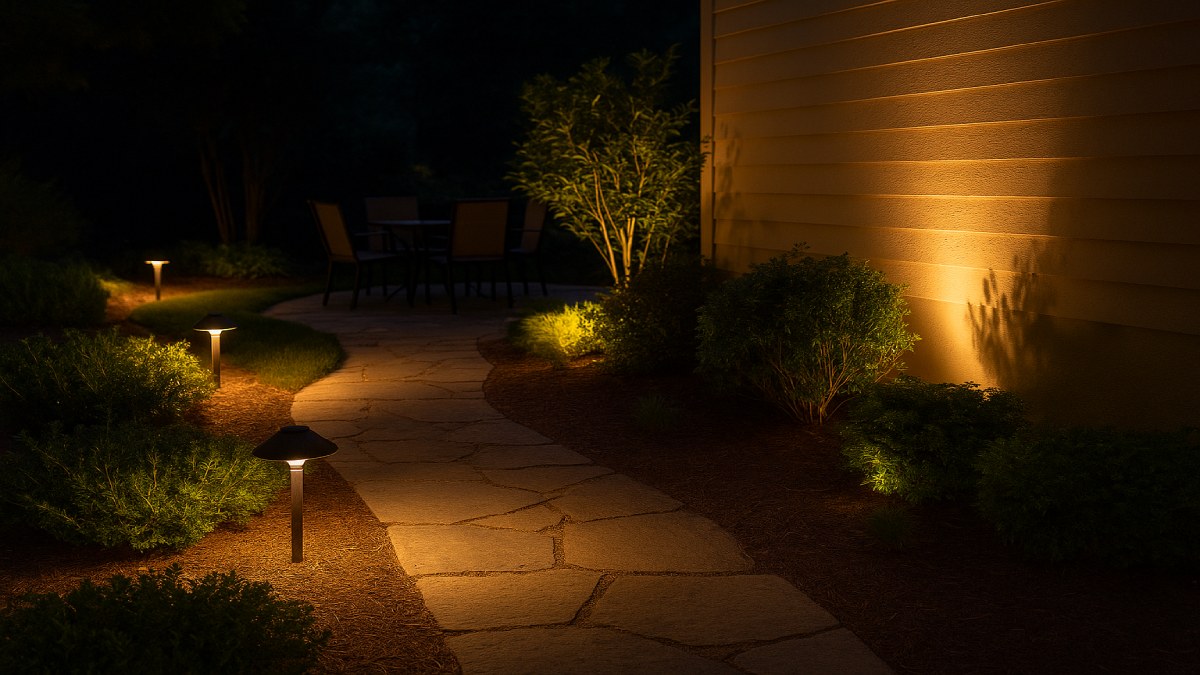
Project 2: Planters and Raised Beds for Instant Greenery
Planters deliver color and scent fast. Raised beds keep weeds down, grow great herbs and veggies, and add structure along fences and patios. You can build a cedar box in an afternoon or drop in a readymade kit and be planting before dinner.
Pick the Right Depth
- Salad greens and herbs: 6–8 inches of soil is usually enough.
- Tomatoes, peppers, eggplant: 10–12 inches gives roots space.
- Root crops on pavers or concrete: 12–18 inches for full growth.
Simple Cedar Planter: Step-by-Step
- Cut list: Four side boards and four corner posts. Aim for a 24–36 inch length for easy placement.
- Assemble the shell: Screw sides to posts with exterior-grade screws; check for square.
- Line and fill: Staple in a breathable liner, then fill with raised-bed mix and compost.
- Plant and mulch: Set plants and top with a thin mulch layer to lock in moisture.
Planting Combos That Always Work
- Herb trio: Basil, thyme, chives near the kitchen door.
- Pollinator mix: Lavender, dwarf marigold, and salvia for color and bees.
- Grill garden: Rosemary, oregano, and jalapeños by the patio table.
Project 3: Privacy and Shade for a Calm Retreat
Privacy turns a yard into a sanctuary. Instead of building a tall fence, you can block views with slim screens, trellises, tall planters, or even outdoor curtains. Shade solves heat and glare in one stroke and makes lunch outside feel comfortable again.
Fast Privacy Options
- Freestanding slat screen: A modern look that lets breezes pass through.
- Trellis with vines: Star jasmine or clematis softens lines and adds fragrance.
- Planter wall: Stagger tall planters to break sight lines while staying moveable.
Shade You Can Add This Weekend
- Umbrellas: Quick relief for a dining set or lounge chairs.
- Shade sails: Three anchors and a triangle sail cool a hot deck fast.
- Compact pergola kit: Defines space now and supports a canopy or vines later.
Layout Moves That Make It Work
- Keep a wide lane—about five feet—from doors to your most used seating.
- Rotate slats or sail edges to block low sun at dinner time.
- Group containers at the base of screens to tie structures to the ground plane.

Project 4: Fire Features for Cozy Nights—With Safety Top of Mind
Fire brings warmth, sound, and a focal point that pulls people together. Start small and safe. Pick a legal fuel type for your city, set clear space around the unit, and use a non-combustible base so sparks never reach dry grass or deck boards.
Pick the Format That Fits Your Space
- Gas fire bowl or table: Clean burn, instant on/off, low smoke.
- Wood fire ring: Classic campfire feel; add a spark screen and keep a hose nearby.
- Chiminea: Directional heat and smoke—great for small patios.
Safe Setup Checklist
- Place on gravel, pavers, or a fire-rated pad—never directly on dry grass.
- Mind clearances from walls, trees, and furniture based on your local rules.
- Supervise flames at all times and fully extinguish before heading in.
Style Touches That Elevate the Look
- Curve a simple gravel arc for seating and tie it into a path.
- Layer throw blankets and outdoor pillows for a living-room feel under the stars.
- Dim surrounding lights so the flame becomes the centerpiece.
Project 5: Paths and Edges That Make the Yard Feel “Finished”
Defined edges and short paths make a yard read clean at a glance. Gravel or stepping stones are fast to install and easy to refresh. With a simple trench edge, mulch stays put and mowing takes less time.
One-Day Gravel Path
- Outline: Lay a hose to trace a gentle curve from the gate to a seating area.
- Excavate: Remove sod 2–3 inches deep; tamp the soil.
- Base: Add compacted crushed stone; set landscape fabric on top.
- Top: Spread fine gravel and sweep it into place with a push broom.
Clean Bed Edges
- Use a half-moon edger to cut a crisp trench line.
- Lay 2–3 inches of mulch to reduce weeds and hold moisture.
- Add steel or composite edging if you prefer a permanent, razor-clean border.
Project 6: Water-Smart Upgrades That Pay You Back
Water-wise ideas save plants during hot spells and bring bills down. A rain barrel captures roof runoff for planters. Better timing on irrigation cuts waste. Mulch keeps soil from drying out in the first place. Small steps compound into big savings over a season.
Rain Barrel in an Afternoon
- Pick a downspout: Choose one close to beds or planters.
- Install the diverter: Cut the downspout and add the kit per the marks.
- Set the barrel: Raise it on pavers so gravity helps the spigot flow.
- Connect a hose: Fill watering cans or run a short soaker line.
Smarter Irrigation in Minutes
- Swap a basic timer for a weather-aware controller.
- Water near dawn to cut evaporation and leaf disease.
- Target roots with drip lines in beds and around trees.
Mulch: Small Effort, Big Gain
- Spread 2–3 inches of shredded bark around shrubs and perennials.
- Keep mulch a couple of inches off trunks to prevent rot.
- Refresh color each spring so beds pop against the lawn.
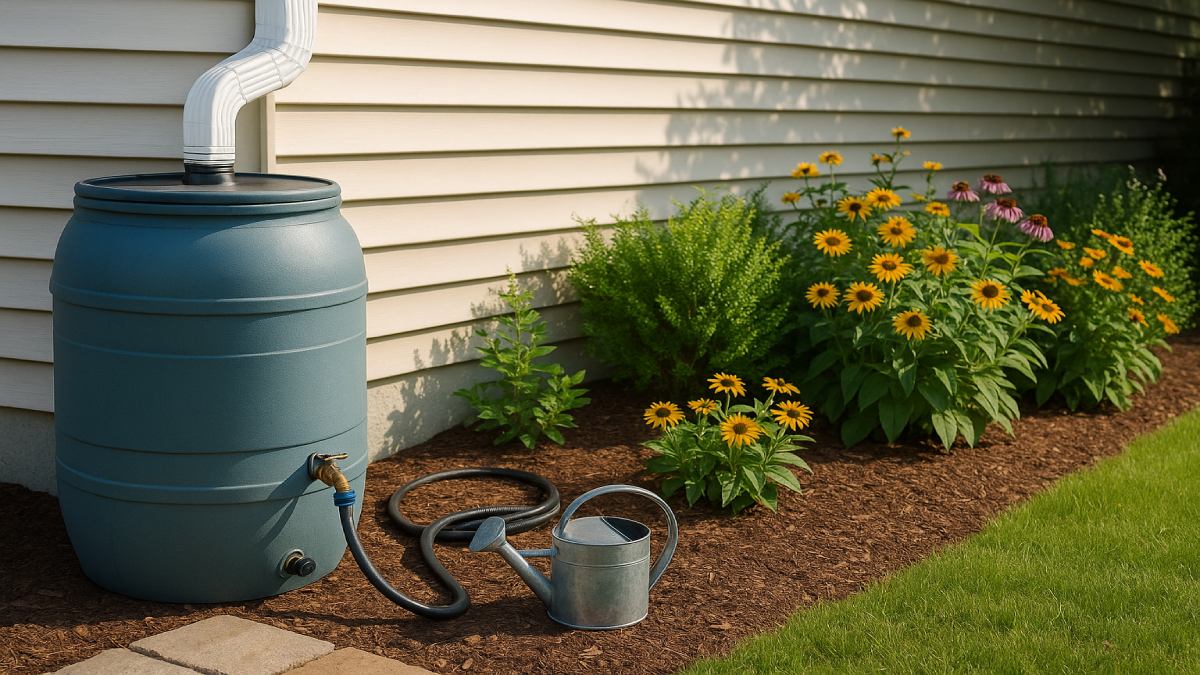
Project 7: Small Deck or Patio Moves That Feel Like a Remodel
You can give a patio new life without pouring concrete. Interlocking deck tiles create an instant “rug” under a lounge set. A compact platform built on deck blocks elevates a bistro table or grill station and brings definition to a bland corner.
Floating Deck Tiles
- Plan: Measure the footprint you want under a table or sectional.
- Prep: Sweep and level the surface. Snap a chalk line for a straight first row.
- Lay: Click tiles together, trimming the last row to fit cleanly.
- Finish: Cap edges and add a doormat to catch grit.
Compact Platform Deck
- Build a 6×8-foot platform on deck blocks for a grill station or café set.
- Choose composite boards for low upkeep, or cedar for a warm, natural look.
- Keep airflow gaps and maintain drainage for long-term durability.
Native Plants and Pollinator Pockets
Native plants handle local weather with less fuss and support bees and butterflies. A small “pocket prairie” near a fence or mailbox can deliver color, wildlife, and an easy-care garden that still looks polished.
Starter List by Sun Level
- Full sun: Coneflower, black-eyed Susan, native grasses like little bluestem.
- Part sun: Bee balm, yarrow, coreopsis.
- Shade: Foamflower, columbine, ferns with groundcover like wild ginger.
Simple Bed Setup
- Smother weeds: Cardboard + mulch for a month if time allows.
- Amend lightly: Mix compost into the top few inches.
- Plant small: Plugs establish faster and cost less than big pots.
- Mulch and water: Keep evenly moist for the first season.
Planning and Budget: Win Every Weekend
Small projects move fastest when you plan on paper, shop once, and build in short, focused blocks. Start with the problem you feel most—glare at dinner, muddy steps, no privacy near the fence—and fix that first. The quick win builds momentum and confidence for the next task.
Weekend Budget Cheatsheet
- Lighting set: $60–$250 for a string-light kit, path lights, and a smart plug.
- Planter build: $40–$120 for cedar, screws, and soil.
- Privacy screen: $80–$300 based on material and size.
- Rain barrel: $90–$180 with diverter kit and paver base.
- Gravel path: $100–$300 for rock, fabric, and edging on a short run.
- Deck tiles: $150–$400 depending on area and brand.
Simple Project Planner
- Define the goal: One sentence: “Create shade at the lounge.”
- Scope the steps: Three to five bullets only.
- Buy list: Fasteners, finish, and that one tool you’re missing.
- Block time: Two half-day sessions beat one long slog.
- Clean finish: Sweep, bag debris, and snap a photo for motivation.
Tools and Materials That Save Time Later
Great results don’t require a truckload of gear. What you do need are exterior-rated fasteners, finishes that handle sun and rain, and a small tool kit that shows up for every project.
Exterior-Ready Materials
- Cedar or redwood: Natural rot resistance and a warm look.
- Pressure-treated pine: Budget-friendly frames and posts.
- Composite boards: Low-maintenance platforms and steps.
- Powder-coated metal: Clean lines for brackets and screens.
- UV-resistant outdoor fabric: Curtains and cushions that last.
Core Tool Kit
- Drill/driver and a fresh bit set.
- Hand saw or circular saw; clamps for safe cuts.
- Level, tape, speed square; stud finder for walls and posts.
- Spade, steel rake, and a tamper for paths and edges.
- Safety glasses, ear protection, heavy gloves.
Maintenance: Keep the Wins Looking New
Set a light routine and your upgrades will shine through every season. A rinse here, a re-coat there, and a quick check of fasteners goes a long way. Put reminders on your phone for spring cleanup and late-summer touch-ups.
Season by Season
- Early spring: Rinse furniture and fixtures; prune shrubs; refresh mulch.
- Summer: Deep water at dawn; adjust timers; trim vines off lights.
- Fall: Seal wood, store cushions, clean gutters and rain barrels.
- Winter: Cover grills, coil hoses, and secure loose items before storms.
Frequently Asked Questions
What are the easiest outdoor projects for beginners?
Quick wins
String lights, a pair of raised planters, and a fresh mulch ring. These three moves improve safety, color, and neatness in a single afternoon.
How much should I budget for small upgrades?
Real-world ranges
Most single-weekend projects land between $100 and $300. Privacy screens, compact platforms, or layered lighting plans can reach $400–$800 depending on size and materials.
How do I pick plants that won’t need constant care?
Low-maintenance choices
Lean on native or region-adapted plants. They handle local weather, support pollinators, and need less water once established. Add mulch to hold moisture and suppress weeds.
Are fire pits allowed everywhere?
Check your local rules
Rules vary by city and HOA. Many areas allow portable units with clearances and a fire-safe base. A quick call to your local office keeps you on the safe side.
Can simple projects raise my home’s value?
Value signals buyers notice
Yes. Buyers love usable outdoor rooms. Lighting, tidy edges, defined seating, and a clean path help photos pop and make your yard feel move-in ready.
Wrap-Up: One Project This Weekend, Another Next Week
Great backyards are built in small, satisfying steps—not marathons. Pick the biggest pain point, fix it with a simple project, and enjoy the result before tackling the next item. Keep the plan short, the materials durable, and the finish work tidy. Those habits stack into a yard that feels calm, looks sharp, and welcomes you outside more often.
Set a date, make a short list, and start. After a couple of weekends, you’ll be surprised by how much comfort you added with a clear plan, a few tools, and steady effort.

